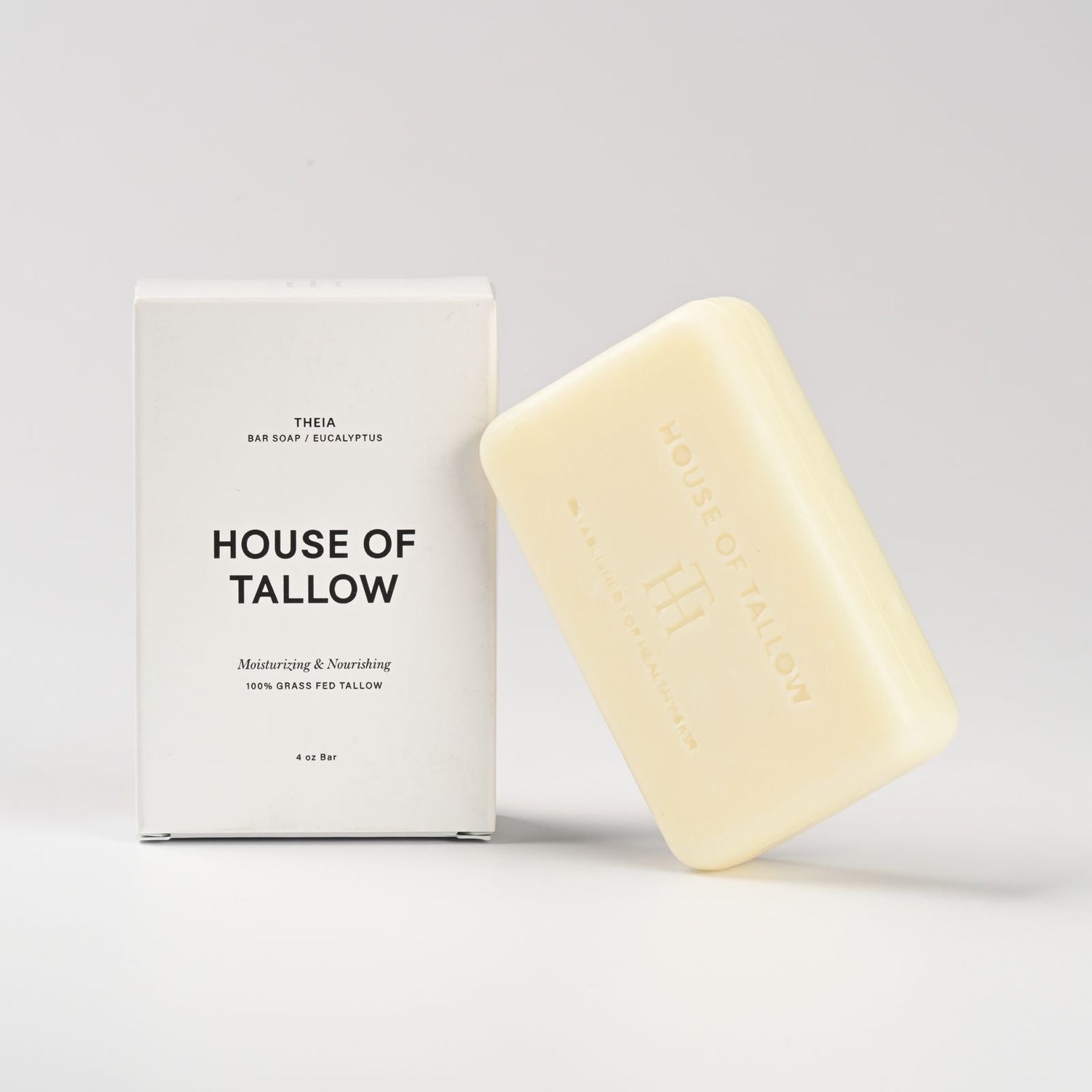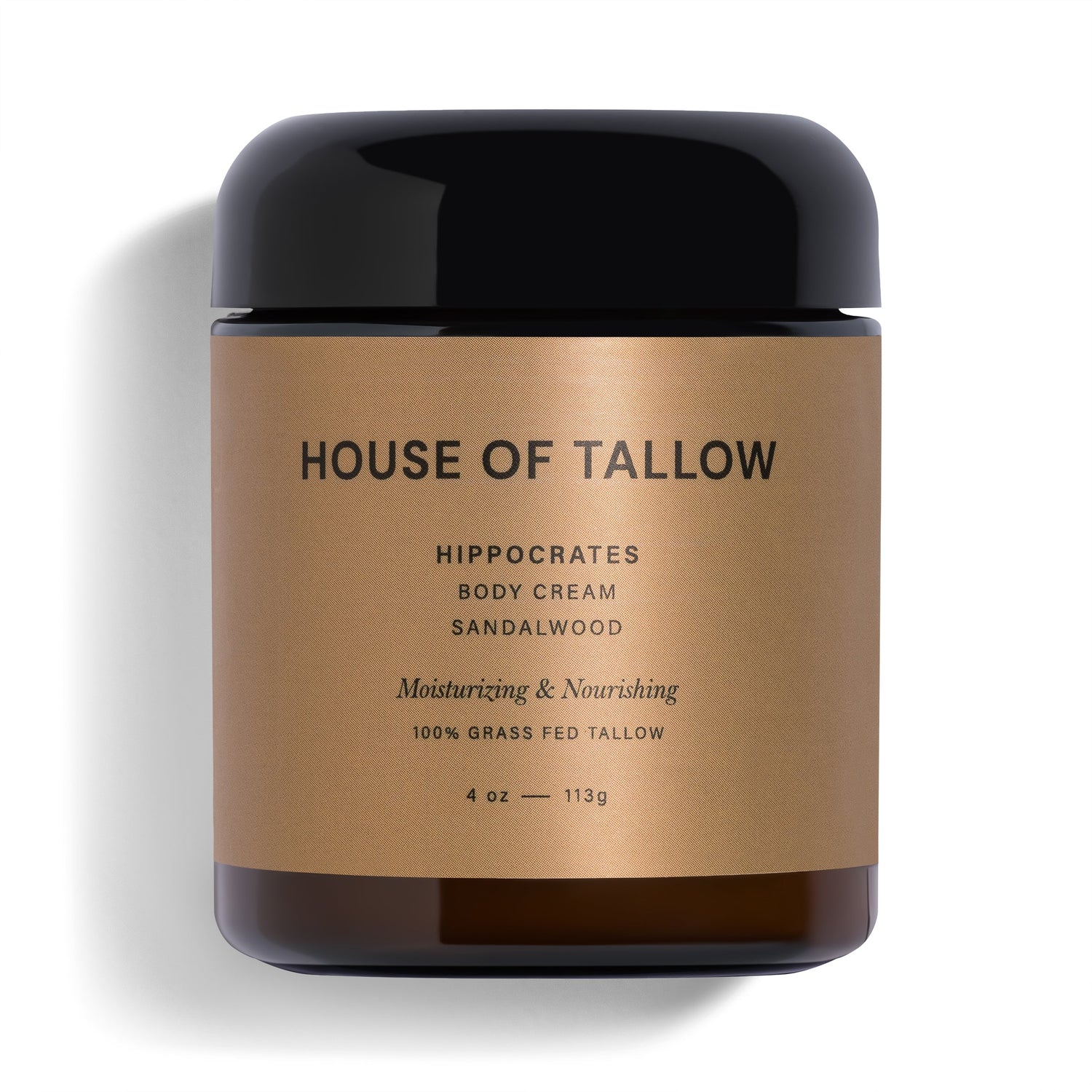Tallow is a nutrient-rich fat derived from animal sources, often grass-fed cows, and is known for its skin-nourishing properties. Blending tallow with natural oils, like olive, jojoba, or avocado oil, enhances hydration, absorption, and overall skincare benefits. Here's what you need to know:
-
Why Blend Tallow with Oils?
- Olive Oil: Boosts hydration and makes application easier.
- Jojoba Oil: Lightweight and balances absorption.
- Avocado Oil: Adds antioxidants and deeper nourishment.
-
How to Blend Tallow and Oils:
- Start with a 3:2 ratio of tallow to oil.
- Melt tallow at 140°F, mix in oils, and whip for a creamy texture.
- Add essential oils (15-20 drops per cup) for extra benefits.
-
Tips for Smooth Blends:
- Maintain proper temperatures to avoid separation or grainy textures.
- Adjust ratios for firmer or softer consistency.
- Use grass-fed, high-quality tallow for best results.
This guide covers everything from sourcing tallow to creating customized skincare blends tailored to your needs.
Preparing Tallow for Blending
Choosing the Right Tallow
Look for tallow that comes from grass-fed animals raised responsibly. It should be processed while fresh to reduce oxidation and have a creamy white appearance. Grass-fed tallow is rich in vitamins A, D, E, K, and B12, as well as fatty acids that are great for skin health [4]. Sourcing from ethical producers ensures consistent quality and makes blending easier while enhancing the benefits of your final product.
Rendering Tallow at Home
If you prefer making your own tallow, you can use two main methods: dry rendering or wet rendering. Both require careful temperature control and attention to safety [1].
- Dry rendering: Heat fat in a heavy-bottomed pot at 200-250°F. Ensure your workspace is well-ventilated and strain the melted fat through cheesecloth to remove impurities [2].
- Wet rendering: Simmer fat with equal parts water on low heat for 4-6 hours. Once cooled, separate the solidified tallow and briefly reheat it to remove any leftover moisture [2].
Opting for Store-Bought Tallow
If you'd rather skip the rendering process, pre-rendered tallow from trusted brands is a convenient option. For instance, House of Tallow offers ready-to-use tallow designed for skincare purposes [4].
When buying tallow, check that it’s filtered, free of impurities, and sourced from grass-fed animals. Clear sourcing information is also a good sign of quality [3].
Store-bought tallow requires minimal prep. Warm it gently to reach a blendable consistency, avoiding overheating to preserve its beneficial properties [2]. Once your tallow is ready, you can move on to blending it with natural oils to create a nourishing skincare product.
Blending Tallow with Natural Oils
Choosing Oils for Blending
The natural oils you choose play a key role in the effectiveness of your tallow-based skincare product. Here's a quick guide to help you decide:
| Oil Type | Suitable For |
|---|---|
| Jojoba | All skin types, especially oily |
| Olive | Dry or mature skin |
| Avocado | Very dry or sensitive skin |
Blending Ratios and Methods
Once you've picked the right oils, it's time to figure out the best ratios and blending techniques. A common starting point is 3 parts tallow to 2 parts oil, which creates a balanced texture [5]. From there, you can tweak the formula:
- Want a firmer balm? Add more tallow.
- Prefer a softer cream? Use more oil.
- Need extra stability? Mix in 1-2 tablespoons of beeswax per cup of the blend.
For a smooth, creamy result, follow these steps:
- Melt the tallow gently in a double boiler, keeping the temperature around 140°F. Add your chosen oil to the melted tallow.
- Use a hand mixer to whip the mixture as it begins to cool.
- Continue whipping until it develops a creamy, butter-like texture.
Once you've achieved the perfect consistency, you can customize the blend even further with essential oils.
Adding Essential Oils
To personalize your product, add 15-20 drops of essential oil per cup of the blend when the mixture is warm but not hot [5]. Here are some popular combinations:
- Lavender and chamomile: Soothing and calming.
- Tea tree and rosemary: Great for clarifying.
- Frankincense and rose: Ideal for anti-aging.
This step allows you to match the blend to specific skin needs or personal preferences. If you're working with sensitive skin, sticking to tallow and olive oil alone offers gentle, nourishing care without irritation [1].
Troubleshooting and Tips for Smooth Blends
Solving Blending Problems
Blending issues can affect the quality of your tallow-based skincare products. Getting the oil ratios and blending conditions right is crucial to avoid problems like separation or grainy textures.
| Problem | Cause | Solution |
|---|---|---|
| Separation | Incorrect temperature or mixing | Reheat to 140°F and re-whip |
| Graininess | Uneven or fast cooling | Filter tallow, cool steadily |
| Excessive oiliness | Wrong tallow-to-oil ratio | Adjust to a 3:2 tallow-to-oil ratio |
Temperature control is a key factor - keeping the mixture around 140°F ensures smooth blending and prevents separation. If separation does occur, gently reheat and whip until the mixture is well-combined [1].
Achieving Smooth Mixtures
Creating smooth blends relies on precise temperature management and proper mixing techniques. Ensure all ingredients are at compatible temperatures before combining. For example, slightly warm the oils before adding them to melted tallow [1].
Here’s a quick reference for temperature guidelines:
| Stage | Temperature | Duration |
|---|---|---|
| Initial melting | 140°F | Until fully liquid |
| Blending oils | 120-130°F | 2-3 minutes |
| Cooling/whipping | 90-100°F | 5-7 minutes |
For larger batches, a stand mixer with a whisk attachment works best. It ensures even mixing and adds air for a lighter, more luxurious texture [2]. For added stability, consider using beeswax as mentioned in the 'Blending Ratios and Methods' section.
Want a smoother, more absorbent product? Add a small amount of jojoba oil. Its composition closely resembles natural skin sebum, helping stabilize the mixture and improving how it absorbs [1].
sbb-itb-a1b9fc0
Conclusion
Key Tips for Blending
To create smooth and effective blends, focus on controlling temperatures and pairing oils that work well with tallow's natural properties. Start with a 3:2 ratio of tallow to oil and adjust as needed [5]. The quality of your blend also hinges on using top-notch ingredients.
Finding the Right Ingredients
For tallow, look for grass-fed options that are responsibly processed to maximize skin benefits. Brands like House of Tallow provide grass-fed tallow that's ideal for skincare [4]. Choosing nutrient-rich, additive-free tallow is essential for achieving the best results.
When selecting suppliers, go for those who are transparent about their sourcing and processing methods. This attention to quality plays a big role in the success of your tallow-based skincare products.
Tallow Balm Recipe - Whipped and Solid Variations
FAQs
Here are some answers to popular questions about combining tallow and natural oils for skincare products.
What oil works well with tallow balm?
Some of the best oils to pair with tallow balm are olive oil, jojoba oil, and rosehip oil. Olive oil helps hydrate and calm the skin, jojoba oil supports elasticity, and rosehip oil improves absorption while aiding skin repair [1] [2].
What is the ideal tallow-to-oil ratio?
A common ratio is 4 parts tallow to 1 part oil, which creates a smooth and balanced texture suitable for skincare [1]. If you're adding essential oils, include about 10 drops per 1/2 cup of the tallow mixture [2]. For more details, check out the "Blending Ratios and Methods" section.
How much jojoba oil should you mix with tallow?
Stick to a 4:1 ratio of tallow to jojoba oil [2]. This combination enhances absorption and nourishes the skin, as jojoba oil closely resembles natural sebum. Be sure to melt both ingredients gently to maintain their beneficial properties.




